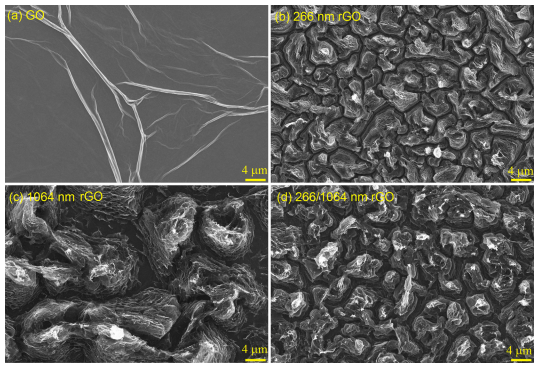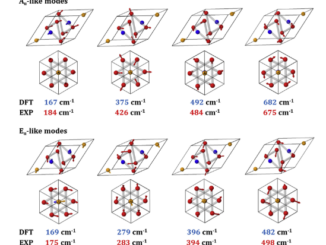
Abstract: Laser-based methods to reduce of Graphene Oxide (GO) have been pointed out as a promising methodology to produce reduced graphene (rGO) due to its potential for scalable production without the use of chemicals and the processing taking place in ambient conditions. Within this context, this study presents the results of a systematic investigation of the reduction of graphene oxide films by means of an Nd:YAG pulsed laser radiation using wavelengths ranging from Ultra-Violet (UV) to Infra-Red (IR). Our results demonstrated that the reduction carried out using infrared (lambda = 1064 nm) and visible radiation (lambda = 532 nm) yield higher sp(3)-sp(2) conversion as a consequence of photothermal reduction. On the other hand, UV radiation is more efficient in removing oxygen groups due to an enhanced photochemical effect. Furthermore, our results demonstrate that rGO films with C/O ratio greater than 100 can be produced if both photochemical and photothermal effects are present in the reduction process.
Author(s): de Lima, BS; Bernardi, MIB; Mastelaro, VR
APPLIED SURFACE SCIENCE
Volume: 506 Published: MAR 15 2020
DOI: 10.1016/j.apsusc.2019.144808




